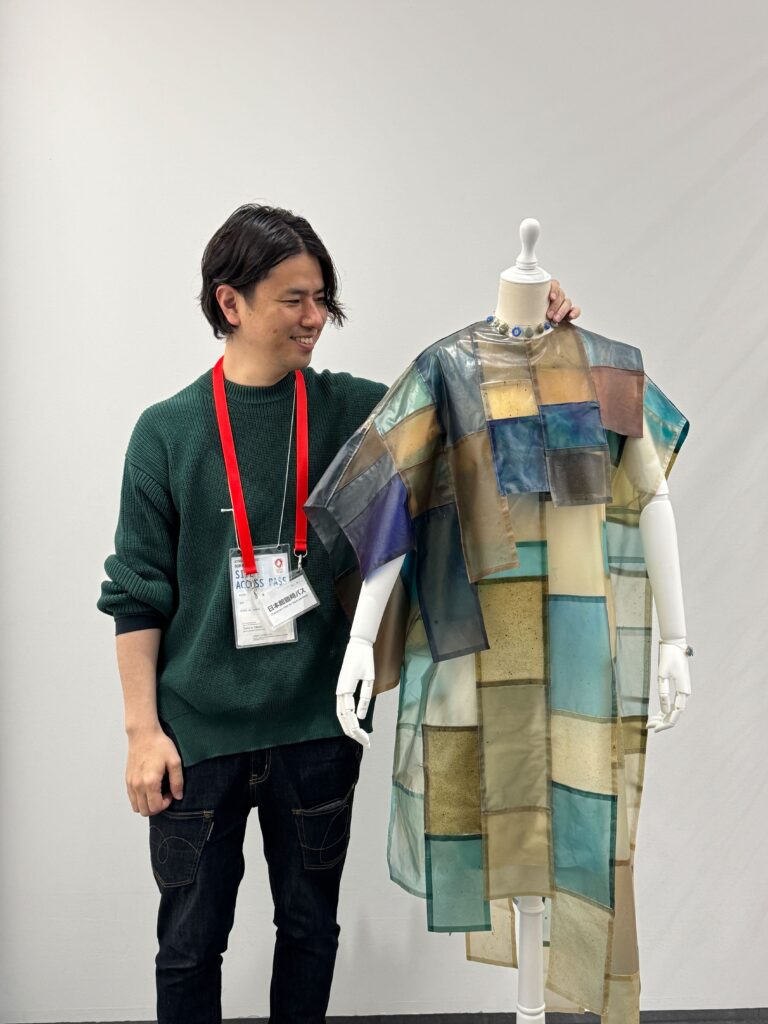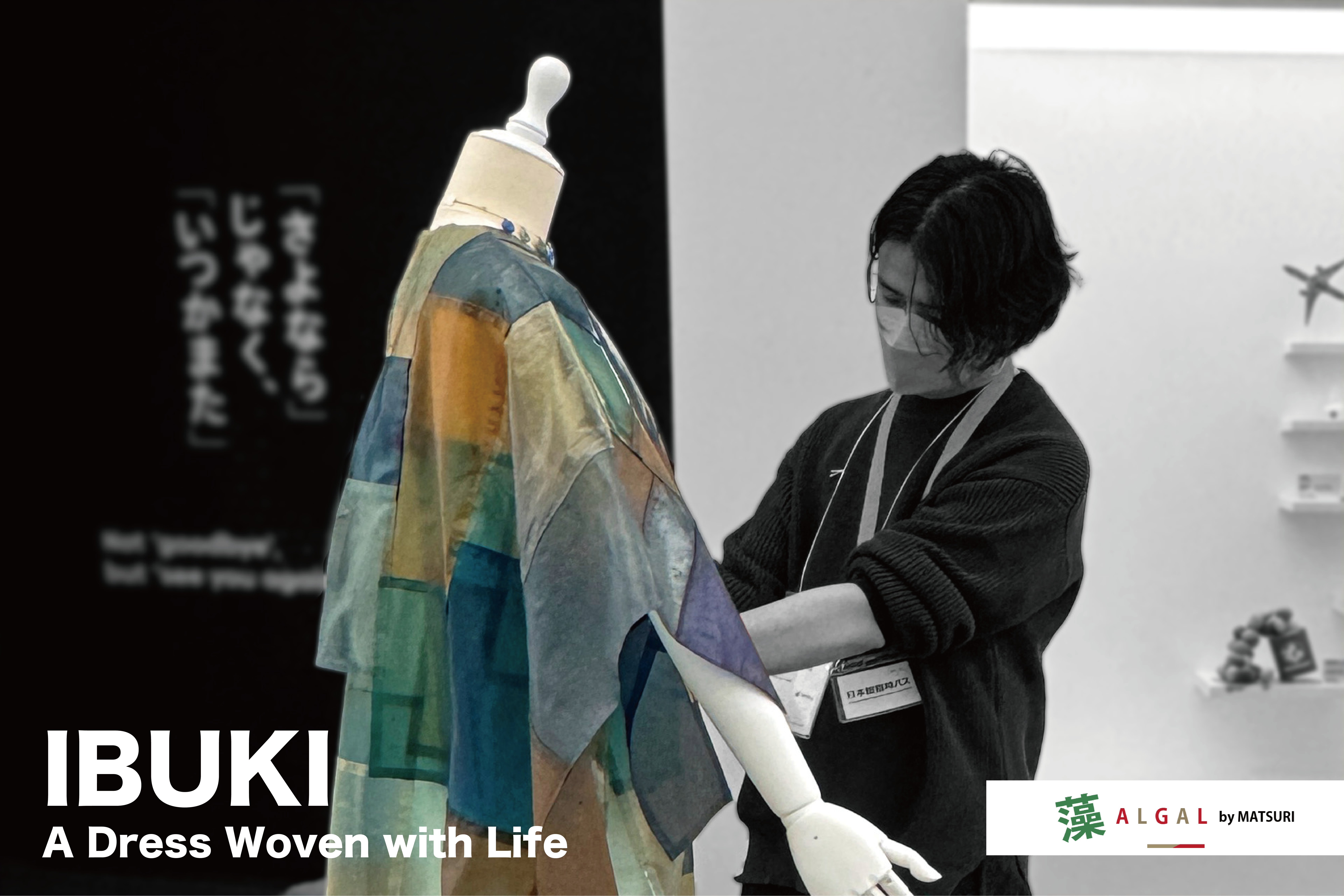
When you hear the word “algae,” what comes to mind?
Maybe it’s the green substance floating in ponds, or maybe you think of edible seaweeds like kelp and wakame?
Today, algae are emerging as a promising source of materials that will support our lives in the future. At Expo 2025 Osaka, Kansai, the Japan Pavilion is dedicating a full third of its space to algae-themed exhibits. Among them is a showcase by MATSURI, a project led by CHITOSE, dedicated to driving the global bioeconomy forward.
MATSURI is a cross-industry collaborative initiative focused on building a society rooted in biotechnology. A key part of this vision is the creation of a sustainable algae-based industry, reflected in “ALGAL by MATSURI” ― a curated collection of algae-derived products spanning fashion, cosmetics, food, paint, and more ― “ALGAL products” showcased under one roof.
In this article, we focus on Ibuki (meaning “breath” or “life force”), a dress crafted by CHITOSE using algae-derived materials. Algae first appeared in Earth’s ancient oceans, playing a vital role in raising atmospheric oxygen levels through photosynthesis and driving the diversification of life. This dress shines a new light on the significance of algae – its design evokes the richness of biodiversity, as if wrapping the wearer in the very essence of life itself. The creator of this dress is Takumi Tabata, a Principal BioEngineer at CHITOSE specializing in algae research, who is also passionate about fashion design. I explored his thoughts and a story behind this unique creation ― a garment that physically embodies the potential of algae.
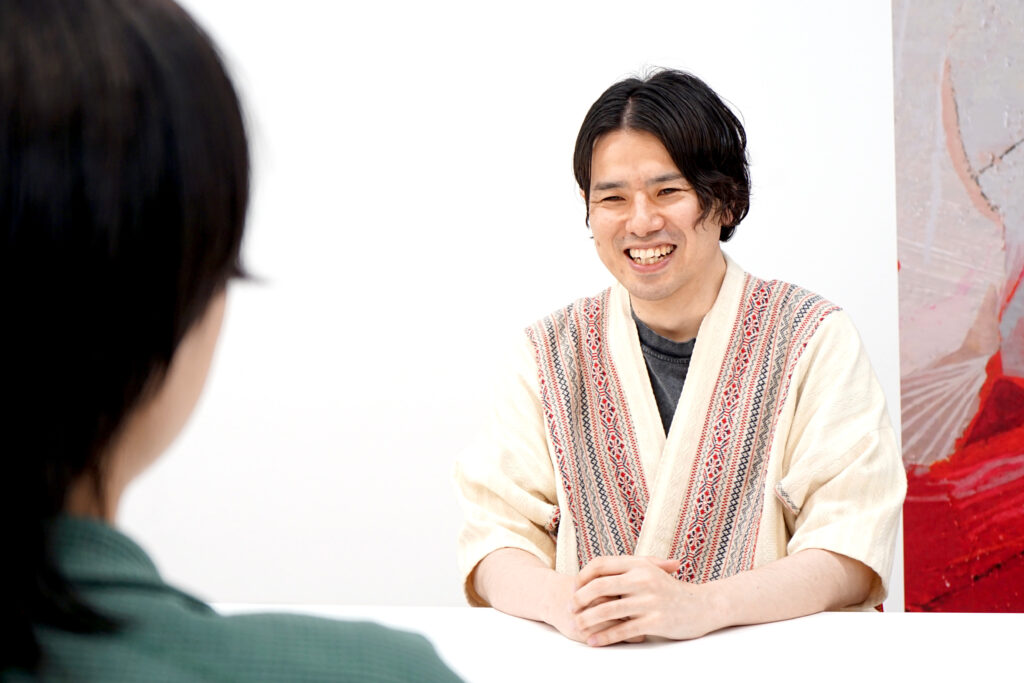
Algae-Woven Patchwork of Diversity
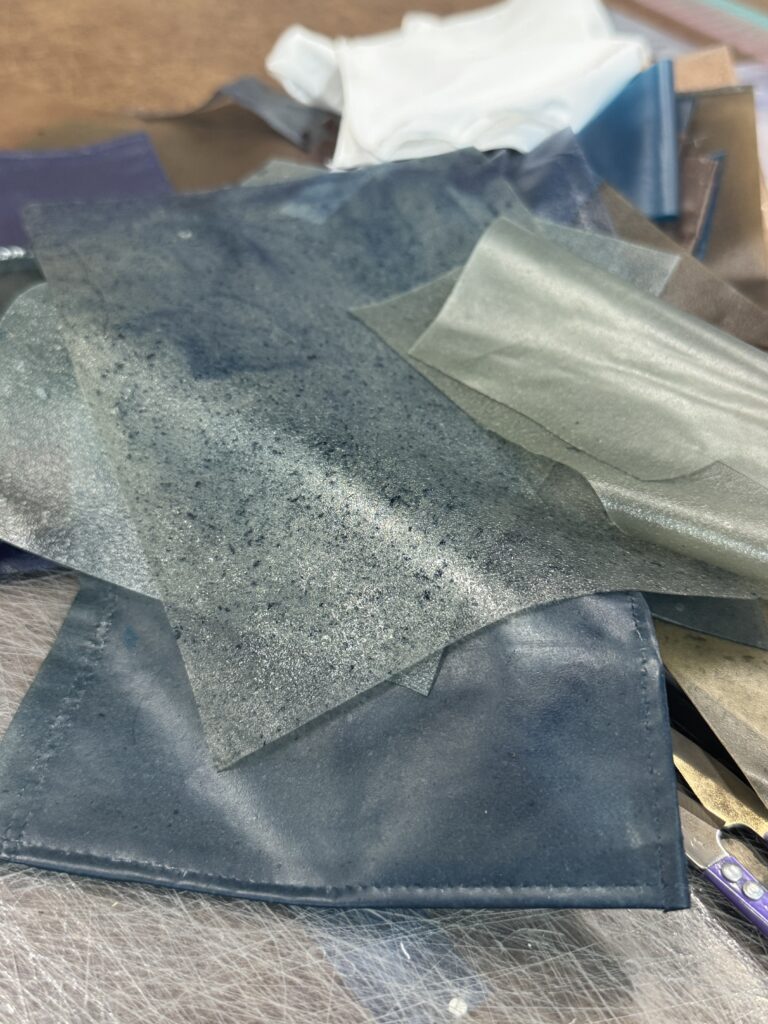
This dress is made from ten different types of fabric, all derived from algae-based materials. Each fabric varies in sheen, texture, color, and pattern—differences that result from the balance of algae blends, pigment extraction methods, and processing techniques. Some are glossy, others matte, some have a grainy texture. These distinct pieces are carefully stitched together, one by one, to form a single, cohesive dress.
Some of the fabrics reveal specks of algae as subtle patterns, showcasing the accidental beauty crafted by nature, scattered throughout the dress. The algae-derived material responds to its environment: softening with humidity on hot days, and taking on a crisp texture in dry air. This fabric, which shifts its character with the surroundings, feels almost as if it’s alive.
As for why he named the dress “Ibuki”, Tabata shares with a smile, “To be honest, the name just popped into my head—it reminded me of something from a manga I read as a kid.” Yet as the word settled, it began to resonate more deeply, evoking images of life, the signs of change, and the idea of coexistence—all of which naturally aligned with the spirit of the piece.
“A Change Starts with One” — The Message Behind the Design
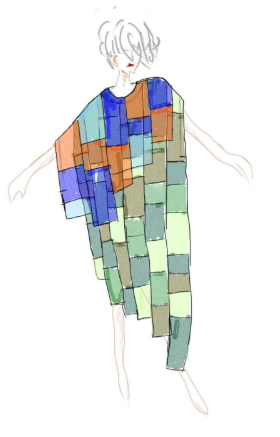 As a designer, what Tabata values most is not creating something that seeks approval from the masses, but whether he himself can truly stand assent to it. Even if it doesn’t resonate with 99 people, he says, it’s enough if it leaves a lasting impression on just one.
As a designer, what Tabata values most is not creating something that seeks approval from the masses, but whether he himself can truly stand assent to it. Even if it doesn’t resonate with 99 people, he says, it’s enough if it leaves a lasting impression on just one.
On the other hand, speaking as a researcher specializing in algae, he adds: “This dress isn’t meant to suggest that simply wearing it will improve the environment. But if, after seeing it at the Japan Pavilion, people go home with even a small realization—that there are alternatives to fossil resources, that algae can produce such a wide range of colors, and that there’s still so much unexplored beauty in algae—and if it sparks a more positive outlook on the future, I would be happy.”
Changing Planet, Unchanging Belief
At the heart of Tabata’s creative origins lies his childhood fascination with insects and plants. He recalls his childhood in Nagano, where he was passionate about bug hunting. Among his most vivid memories are the mesmerizing colors of the jewel beetle, the beauty of butterfly wings, and the unexpected shapes and colors revealed by nature—experiences that have shaped his current sense of form and design.
This cultivated sensitivity is reflected in the colors and structure of Ibuki. The dress, designed with algae-derived fabrics, embraces color irregularities, texture, and accidental patterns as unique characteristics. It combines a wide array of colors and shapes freely, respecting their individuality. At its core, the dress embodies the belief that “no two lives, colors, or forms are the same.”
This belief also fuels his growing concern for the bio-diversity that is slowly disappearing from the Earth. He shares, “Humans are not the ones who control the planet. But I do believe we have the power to change things. Even though it might seem presumptuous, if I can do something, even in a small way, to help shift things toward a better direction, I would.”
Ibuki embodies a belief in a kind future and a quiet resolve to protect it.
